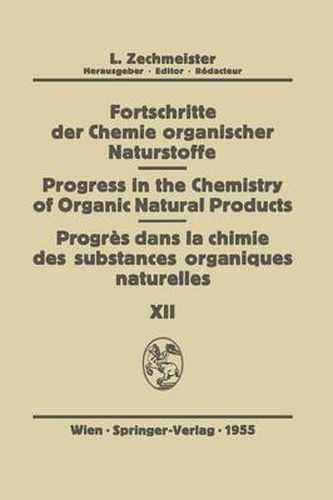Readings Newsletter
Become a Readings Member to make your shopping experience even easier.
Sign in or sign up for free!
You’re not far away from qualifying for FREE standard shipping within Australia
You’ve qualified for FREE standard shipping within Australia
The cart is loading…






This title is printed to order. This book may have been self-published. If so, we cannot guarantee the quality of the content. In the main most books will have gone through the editing process however some may not. We therefore suggest that you be aware of this before ordering this book. If in doubt check either the author or publisher’s details as we are unable to accept any returns unless they are faulty. Please contact us if you have any questions.
Substances belonging to this group of organic compounds are wi,lely distributed in Nature, being found in plants, both higher and lower fungi and, upto the present time, in one animal source, sheep wool-fat. For a long- time no real differentiation was possible between the tetra- and penta- cyclic triterpenes and the sterols. Then the two latter became disting- uishable by their selenium. *dehydrogenation products, i. e. , picene and naphthalene derivatives from the pentacyclic triterpenes and DIELS’ hydrocarbon from the sterols. It is now apparent that those compounds yielding predominantly I: 2: 8-trimethylphenanthrene on dehydro- genation represent yet another class, and this property is regarded as typical of the tetracyclic triterpenes. The group contains both C and C 30 3l compounds and, although the latter fall outside RUZICKA’S strict definition of triterpenes (I42), it seems desirable to permit this deviation. Members with thirty-two carbon atoms may well be discovered in due course. In a most* valuable account of the triterpenes written in I949, JEGER. (II3) was able to summarize all that was known about the tetra- cyclic group in a very small compass. Most of the work discussed in the present article has been published during the last five years and in that time the structures of some twenty compounds have been elucidated. Of outstanding importance is the revelation of close structural relation- ships tQ the steroids, and the presence of C and C side-chains, skeletally 8 9 identical with those of cholesterol and ergosterol.
$9.00 standard shipping within Australia
FREE standard shipping within Australia for orders over $100.00
Express & International shipping calculated at checkout
Stock availability can be subject to change without notice. We recommend calling the shop or contacting our online team to check availability of low stock items. Please see our Shopping Online page for more details.
This title is printed to order. This book may have been self-published. If so, we cannot guarantee the quality of the content. In the main most books will have gone through the editing process however some may not. We therefore suggest that you be aware of this before ordering this book. If in doubt check either the author or publisher’s details as we are unable to accept any returns unless they are faulty. Please contact us if you have any questions.
Substances belonging to this group of organic compounds are wi,lely distributed in Nature, being found in plants, both higher and lower fungi and, upto the present time, in one animal source, sheep wool-fat. For a long- time no real differentiation was possible between the tetra- and penta- cyclic triterpenes and the sterols. Then the two latter became disting- uishable by their selenium. *dehydrogenation products, i. e. , picene and naphthalene derivatives from the pentacyclic triterpenes and DIELS’ hydrocarbon from the sterols. It is now apparent that those compounds yielding predominantly I: 2: 8-trimethylphenanthrene on dehydro- genation represent yet another class, and this property is regarded as typical of the tetracyclic triterpenes. The group contains both C and C 30 3l compounds and, although the latter fall outside RUZICKA’S strict definition of triterpenes (I42), it seems desirable to permit this deviation. Members with thirty-two carbon atoms may well be discovered in due course. In a most* valuable account of the triterpenes written in I949, JEGER. (II3) was able to summarize all that was known about the tetra- cyclic group in a very small compass. Most of the work discussed in the present article has been published during the last five years and in that time the structures of some twenty compounds have been elucidated. Of outstanding importance is the revelation of close structural relation- ships tQ the steroids, and the presence of C and C side-chains, skeletally 8 9 identical with those of cholesterol and ergosterol.